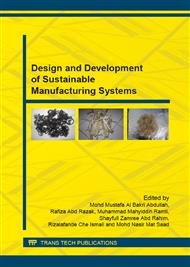p.131
p.136
p.141
p.148
p.153
p.158
p.164
p.170
p.177
Rapid Indicators in Detecting Variation of Fly Ash for Making HVFA Concrete
Abstract:
The use of fly ash as an alternative material for cement substitute in concrete mix already a common practice nowadays. However, as a waste material, fly ash varies in quality and condition, as shown by variation of its fineness, specific gravity, Loss on Ignition (LOI) and also on its chemical composition. By measuring the acidity (pH) of the fly ash in water solution, percentage of mass retained on 45 μm sieve, and superplasticizer demand of the fly ash, we can develop a quick estimation of the quality of fly ash. This study aims to investigate a quick method to estimate the quality of fly ash by measuring the physical and chemical pointers, as indicator for its properties and the effect on the setting time and compressive strength of mortar. Fly ash content was varied from 0-70% of the total mass of cementitious materials to make HVFA mortar. Fly ashes were obtained from four power plants in Indonesia. Tests conducted were material characterization, setting time, temperature rise, and compressive strength of mortar at different ages. Different fly ash quality can be shown by the fast pointers; namely pH, superplasticizer demand and % retained on 45 μm sieve. Setting time and strength development were affected by the different properties of fly ash.
Info:
Periodical:
Pages:
153-157
Citation:
Online since:
November 2015
Authors:
Keywords:
Price:
Сopyright:
© 2015 Trans Tech Publications Ltd. All Rights Reserved
Share:
Citation:


